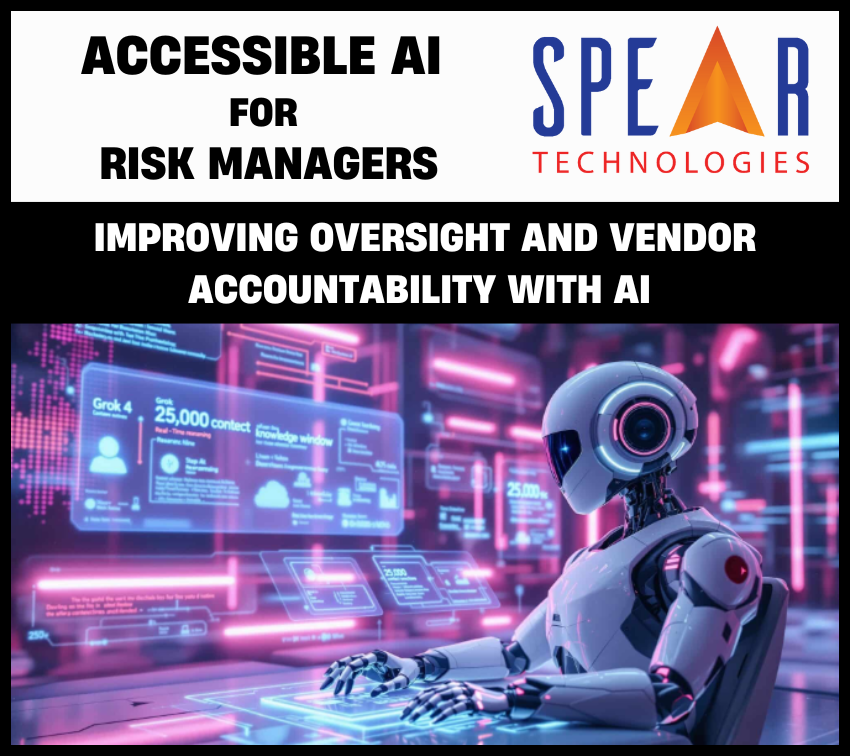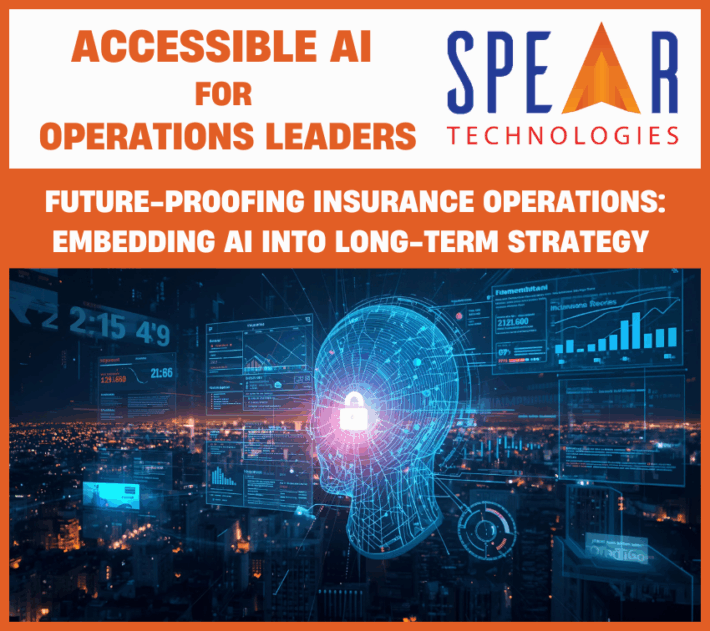Accessible AI for Risk Managers: Improving Oversight and Vendor Accountability with AI

For Risk Managers, ensuring strong oversight and accountability across vendors, third-party administrators (TPAs), and claims operations is a constant challenge. With multiple entities handling claims, even small gaps in communication or performance tracking can lead to costly delays, inconsistent settlements, or compliance risks.
Accessible AI offers a solution. By surfacing real-time performance data and standardizing reporting, it gives Risk Managers transparent insight into every part of the claims process—from settlement speed and litigation rates to communication quality and vendor responsiveness.
The result: greater accountability, faster intervention, and stronger risk governance.
How Accessible AI Surfaces Performance Data
Traditional oversight relies heavily on manual reports or after-the-fact reviews, leaving blind spots until issues become too costly to fix. Accessible AI changes that by continuously aggregating and analyzing claims data across systems, vendors, and partners.
Risk Managers can instantly see:
- Which TPAs or vendors close claims fastest—without compromising quality.
- Where litigation rates or settlement delays are trending upward.
- How consistently communication and documentation standards are being followed.
Dashboards built on Accessible AI provide a single, trusted view of performance across the organization, giving Risk Managers the evidence they need to make proactive decisions—whether reallocating work, refining processes, or enforcing accountability with data-driven precision.
Ensuring Transparency Across Partners and Vendors
When Risk Managers oversee multiple vendors and partners, visibility becomes essential to maintaining fairness, compliance, and cost control.
Accessible AI provides that transparency through automated tracking and intelligent dashboards. Virtual agents can log communications, track deadlines, and flag inconsistencies in process execution. This ensures that every stakeholder—from TPAs to legal counsel—operates from the same playbook.
- Settlement Transparency: AI reveals which vendors resolve claims efficiently and which consistently miss targets.
- Litigation Rate Monitoring: Automated tracking highlights patterns of escalation, helping Risk Managers intervene before costs rise.
- Communication Quality Insights: Natural language processing can assess response times, tone, and completeness of correspondence—ensuring that vendor performance meets established service standards.
For public entities and risk pools, this level of transparency provides a new layer of accountability – turning subjective vendor evaluations into measurable, verifiable data.
Strengthening Oversight Through Consistent Data
Accessible AI makes it possible to enforce consistent standards across distributed operations.
With centralized insights, Risk Managers can ensure that every vendor, adjuster, and partner adheres to compliance requirements, documentation protocols, and service expectations.
AI-driven oversight tools verify that key steps—such as claimant contact, medical review, or reserve updates—are completed on time and according to policy. If a process deviates, alerts notify leadership immediately, enabling fast corrective action before costs or risks escalate.
The outcome is a data-backed governance model where accountability isn’t reactive—it’s embedded.
Empowering Business Users with AI They Can Shape
If you’ve read the first few articles, this will be a refresher. If you’re joining us here, it’s essential context. Every Accessible AI use case builds on this foundation: putting AI into the hands of business users who know the work best.
One of the most transformative aspects of accessible AI in insurance is the shift from developer-led to business-led model interaction. In traditional setups, any customization or retraining of AI models requires intervention from IT teams, data scientists, or external vendors. This dependency creates bottlenecks, slows innovation, and disconnects model development from those who understand the business problems best—your underwriters, claims adjusters, fraud investigators, and customer experience teams.
Why Business-User Accessibility Is a Game-Changer
When AI tools are designed for business users, the result is more responsive, agile, and relevant model development. Empowering business users to adapt and train AI models on their own yields multiple advantages:
- Faster Time-to-Value: No waiting on IT backlogs or vendor response times
- Higher Accuracy: Models reflect real-world operational needs and are continually refined by domain experts
- Greater Adoption: Tools that align with existing workflows and skill sets see higher engagement
- Scalable Innovation: Business teams become active participants in digital transformation, not passive consumers
This article highlights four high-impact examples of how Accessible AI can empower Risk Managers improve oversight, prevent losses, and protect their organizations.
Some Tangible Benefits to Empowering Risk Teams
Empowering risk management teams with AI-driven oversight tools is extremely impactful:
- Reduced Administrative Burden: Automation and dashboards can cut manual reporting time by up to 30%, freeing staff to focus on analysis and decision-making.
- Faster Vendor Accountability: AI insights help identify underperforming partners early, improving cycle times and reducing avoidable costs by 20–25%.
- Litigation Reduction: Transparent performance tracking correlates with double-digit drops in litigation rates as issues are resolved sooner.
- Compliance Confidence: Built-in validation ensures documentation accuracy and procedural consistency, reducing compliance findings by up to 15%.
With these benefits, Risk Managers gain a clear view of their operations and partners—supported by data, not assumptions. Accessible AI makes oversight continuous, transparent, and actionable.
High-Risk Claim Identification: Spotting Problems Before They Escalate
Accessible AI continuously scans claim notes, claimant history, and external data sources to flag claims trending toward severity. Instead of waiting for reserve increases or litigation warnings, Risk Managers get early alerts when a claim shows signs of escalating.
With this visibility, they can take immediate steps—redirecting workflows, engaging TPAs, or notifying stakeholders before costs spiral.
Impact: Fewer surprises, stronger oversight, and measurable savings in claim costs.
Why It Matters for Risk Managers
For Risk Managers and pool administrators, accountability isn’t optional—it’s mission-critical.
Accessible AI provides the tools to monitor every layer of claims activity, strengthen vendor relationships through transparency, and ensure consistent outcomes across the board.
By transforming oversight from reactive auditing to proactive intelligence, Risk Managers can:
- Prevent costly escalation through early insight.
- Hold vendors accountable to measurable performance standards.
- Strengthen governance and compliance posture.
- Deliver better outcomes for members, policyholders, and stakeholders.
Next in the Series: We’ll take a closer look at how Email Sentiment Alerts monitor tone and signals of dissatisfaction in member/vendor communications to reduce complaints, disputes, and litigation.
Ready to see how SpearClaims™ can help your team do more with less?
Schedule a Demo to see how SpearClaims™ with Accessible AI empowers Risk Managers to gain full visibility, strengthen vendor accountability, and manage exposure with data-driven precision.
Request Pricing to learn how cost-effective it can be to modernize oversight, eliminate blind spots, and ensure transparency across every layer of your risk management operations.



